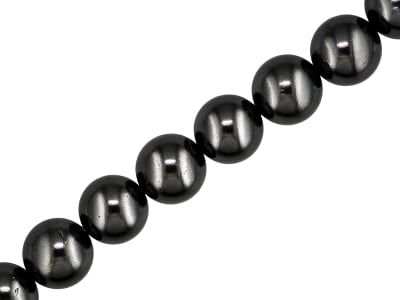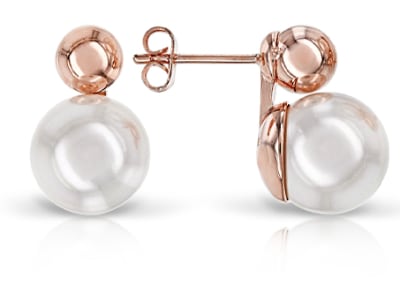“Shell pearls” are imitation pearls. A mother of pearl bead nucleus is coated to resemble Tahitian, South Sea, or freshwater cultured pearls. They are an affordable alternative to their more expensive counterparts.
General Information
Common Name
Shell Pearl
Species
Shell
Transparency
Translucent - Opaque
Dispersion
Strength: None
Refractive Index
1.530-1.685
Polariscope Reaction
Aggregate (AGG)
Fluorescence
SWUV: Variable
LWUV: Variable
LWUV: Variable
CCF Reaction
None
Pleochroism
None
Streak
White
Specific Gravity
2.700-2.890
Toughness
Fair
Inclusions
Shells might show orient and will have a parallel growth structure. Shell pearls will often have a flame-like structure. Numerous minute particles that create a sparkle effect. Lack of overlapping aragonite platelets under magnification. Chips in coating.
Luster
Greasy, Pearly
Fracture
Uneven, Splintery
Cleavage
None
Chemical Name
Calcium carbonate+conchiolin+water
Chemical Formula
CaCO3+conchiolin+H2O
Crystal System
NA
Chemistry Classification
Organic
Shell Pearl Colors
-
 Bi-color
Bi-color -
 Black
Black -
 Blue
Blue -
 Brown
Brown -
 Gray
Gray -
 Green
Green -
 Multi-color
Multi-color -
 Multi-color
Multi-color -
 Orange
Orange -
 Pink
Pink -
 Purple
Purple -
 Red
Red -
 White
White -
 Yellow
Yellow
Alternate Names
Imitation Pearl, Pearl Simulant, "South Ocean pearl", South Pacific pearl", "Oustah de Luxe" pearl, "Composite pearls", "Micomo pearls", "Masami"
Countries of Origin
Unknown; China; Indonesia
History
Mother of Pearl nucleus are often used to simulate pearls. The Tridanca gigas has a white shell and are frequently used in the manufacture of "Shell pearls".
Care
Soluble in hydrochloric acid

